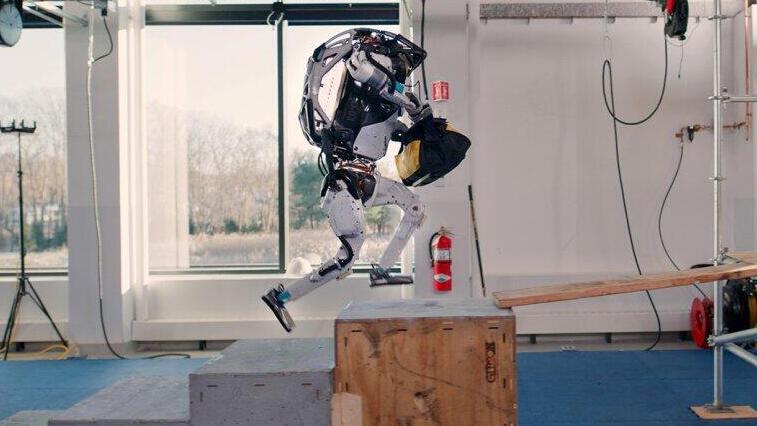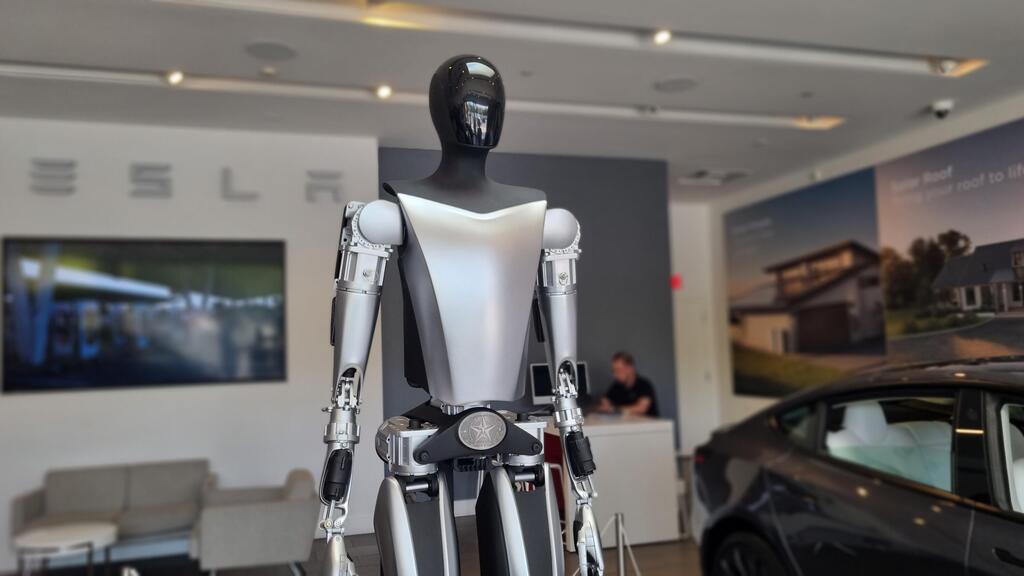The next-generation robots are about to arrive soon. These gleaming humanoid machines are strong and fast, a fusion of cutting-edge technologies. They have one advantage their predecessors lacked: advanced artificial intelligence that makes them almost intelligent creatures capable of sharing our world. If we thought the arrival of ChatGPT revolutionized our world, wait until these new robots arrive. The world as we know it will never be the same.
They are called "humanoid robots," meaning human-like robots. They resemble humans to varying degrees, capable of walking or running, bending or jumping, lifting heavy loads, and performing tasks like humans—but without getting tired or bored.
The resemblance to humans doesn’t stem solely from narcissism; it’s primarily intended to allow them to integrate into environments designed for humans. Manufacturers envision them blending into households, vacuuming, folding laundry, and even walking the dog. However, the reality is that the home environment is complex and unpredictable—robots might cause damage, face abuse, or worse. Thus, most manufacturers are targeting business and industrial markets, where the big money lies.
There’s a reason why this is happening now. All the humanoid robots we’ve seen in countless YouTube videos—jumping, dancing, or simply waving hello—were mechanical toys, pre-programmed or remotely controlled. Over the past two years, new AI capabilities have emerged, enabling robots to understand their surroundings, identify objects and people, comprehend complex voice commands, and learn by imitating humans. This was impossible before, and it’s what is opening up a new market—one that Elon Musk estimates to be worth $10 trillion, or even $25 trillion according to another speech.
At the starting line of this race are all the familiar tech giants, joined by new players. Elon Musk was the first to recognize the opportunity, unveiling Tesla’s robot "Optimus" two years ago. Jeff Bezos and Amazon, along with Microsoft and OpenAI, have backed the American startup Figure AI and its robot "Figure02." Google has entered the field with "Apollo," developed by the American startup Apptronik, in which it has invested. Meta has established a robotics division and is investing billions in this field, Apple is also involved, and dozens of Chinese companies are working diligently to develop their own robots.
Of course, there’s also an Israeli company in the game—"Mentee Robotics." According to industry speculation, it is expected to unveil its robot soon and secure a prominent position in this emerging global industry. The company was secretly founded in 2022 by Professor Amnon Shashua, chairman and CEO of Mobileye, along with Professor Lior Wolf and Professor Shai Shalev-Shwartz—three experts and researchers in artificial intelligence. Last month, Shashua posted a teaser video on X, revealing that the company is developing the third generation of its robot, "MenteeBot V3.0."
MenteeBot 3.0 aligns with the most advanced models from Tesla and Figure AI. Standing at 5'9" tall and weighing 155 lbs., it features a human-like gait, a head equipped with five cameras (two "eyes," two side cameras, and one rear camera) providing 360-degree vision, 31 joints powered by self-developed strong motors, and human-like hands with ten fingers capable of lifting up to 55 lbs. This makes it one of the strongest robots in the world.
However, what sets MenteeBot apart is not its hardware but its "brain"—the dual Jetson Orin AGX AI processors from Nvidia. These processors handle computer vision and AI analysis, enabling the robot to understand voice commands, learn its environment, and navigate it autonomously. It can mimic human actions and repeat them consistently.
Mentee Robotics leads in training robots using computer simulation and then improving learning in the real world (sim2real). In fact, the main competition between companies will center on the "intelligence" of the robots. Mechanically, the companies are reaching similar levels, and all will eventually offer similar features. But superior AI capabilities and faster, more accurate human mimicry will determine the winners. This focus on intelligence is also what’s delaying companies from breaking into the market.
And how much will it cost? The shelf price of MenteeBot is expected to be $20,000–30,000, a bargain compared to some competing robots priced over $100,000. However, MenteeBot will not be sold as a standalone product but will be offered as part of a subscription model, including maintenance and software updates.
This pricing model is particularly suited for business clients, which is MenteeBot’s initial target market. That’s also why the new model has been enhanced for strength and durability. Soon, it could be moving along automobile production lines, transporting heavy packages in logistics warehouses, or working near molten metal furnaces or inside freezing food storage units. Those who hoped it might clean their house will have to wait a bit longer.
The market potential is enormous. The possibility of replacing human workers with robots appeals to many companies, especially in industries struggling to fill positions. According to a Goldman Sachs study, there are currently 700,000 unfilled jobs in the U.S., with a global shortfall of 2 million workers expected by 2030.
These new robots will be rented at rates under $10 per hour and can work 24 hours a day, totaling over 700 hours of work per month compared to 180 hours for human workers—without vacation or sick days. This means that Mentee and other robotics companies must ensure they can meet the expected demand.
Just as in the fields of autonomous vehicles and space exploration, Elon Musk was ahead of the curve in predicting the future and its vast potential. In Tesla videos, the Optimus 2 robot can fold a shirt and even pick up an egg without breaking its shell. However, a demonstration at Tesla’s October conference was less convincing, as it became evident the robots were remotely controlled by humans (indicating their AI isn’t fully ready yet).
<< Get the Ynetnews app on your smartphone: Google Play: https://bit.ly/4eJ37pE | Apple App Store: https://bit.ly/3ZL7iNv >>
Other prominent competitors include Figure AI, founded in 2022 with investments from Amazon, Jeff Bezos, Microsoft, OpenAI, Nvidia, and Intel. Its "Figure01" robot amazed the world by preparing coffee using an espresso machine and recognizing and serving fruit to someone who requested "something to eat." This was just a preview of "Figure02," introduced this year, which boasts advanced AI capable of combining quick reflexive thinking with slower deductive reasoning, as well as enabling collaboration and communication between multiple robots.
Veteran company Boston Dynamics, known for its acrobatic and dancing robots like the muscular "Atlas" and dog-like "Spot," is also in the mix. These robots, originally developed for the U.S. military, lack AI and are extremely expensive. The company, which changed ownership from Google to Japan’s SoftBank and finally to Hyundai, has introduced a smarter and more refined version of Atlas. However, with a price tag of $200,000, it is less appealing.
The demand for humanoid robots is growing globally, with over 160 manufacturers worldwide, including more than 60 in China, 30 in the U.S., and about 40 in Europe. The Chinese industry is characterized by a combination of electric vehicle manufacturing and robotic technology development, supported by government subsidies to outperform the West.
Like in the AI field, where Nvidia chips form the backbone of advanced AI systems, Nvidia hardware also powers most robots. Several companies, including Mentee Robotics, use Nvidia’s simulation technology to train robots before deploying them in the real world. According to Professor Gal Chechik, head of Nvidia’s AI research center in Israel, "The next frontier for AI is the physical world—the real-world AI. Why didn’t it start here? Because it’s much harder. Language models simply read the internet, but robotics requires interaction with the environment."
Chechik explains that simulation allows robots to train faster, reducing the amount of real-world training needed. Nvidia is also developing reinforcement learning systems for robot training, with Chechik’s team playing a significant role. This ecosystem of simulation, reinforcement learning, and AI hardware is accelerating the robotics revolution.
Dr. Aviv Tamar, head of the Technion’s robotics learning lab, adds that teaching robots through reinforcement learning—where they receive positive feedback for progress—is challenging and often requires countless trial-and-error cycles. Alternative methods, like human demonstrations, also have limitations.
The robotics revolution is here, and as Nvidia CEO Jensen Huang said: "Everything that moves will one day be autonomous."





